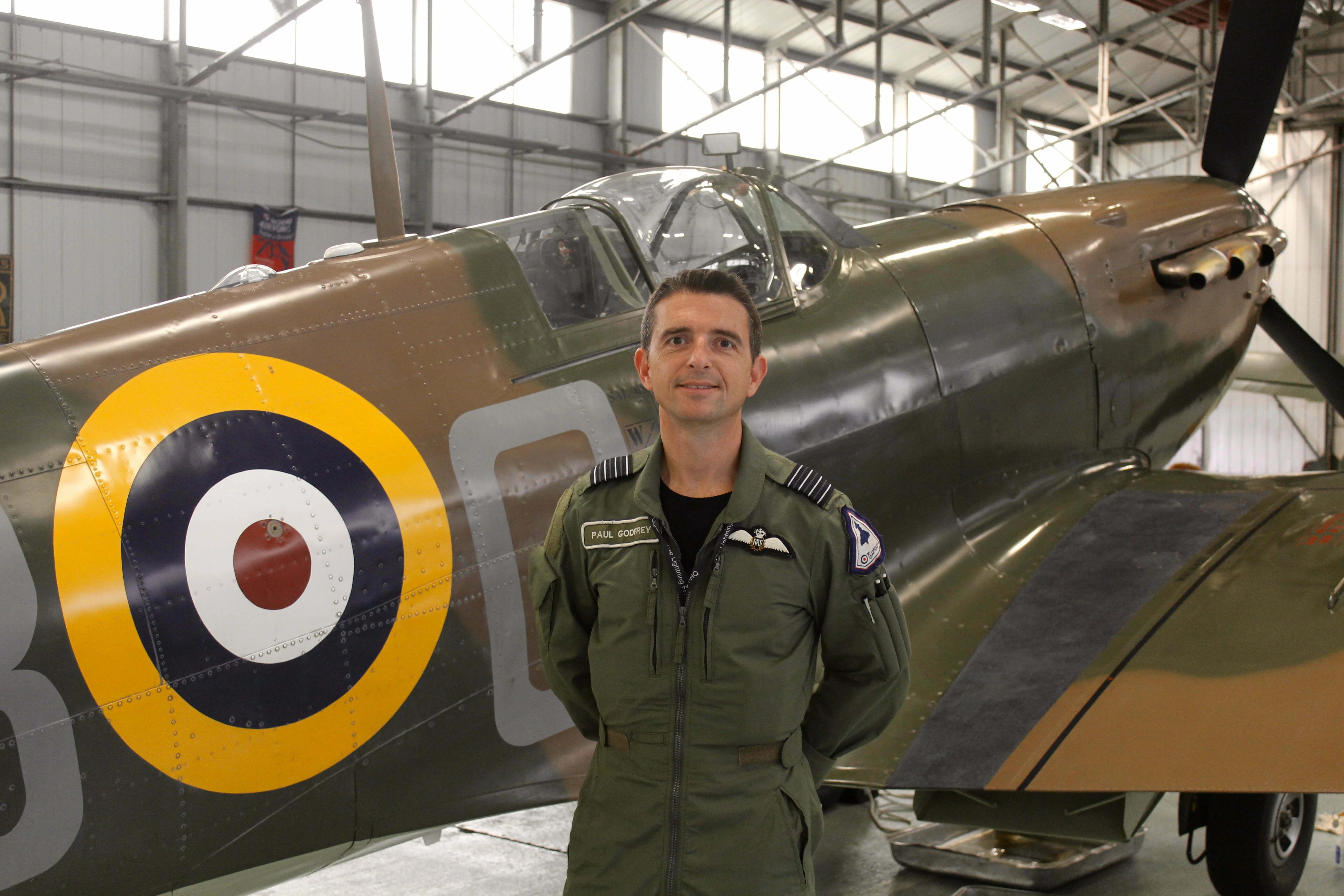2015-09-26 By Robbin Laird
During a visit to Royal Air Force (RAF) Coningsby to discuss various air power issues, including the Rapid Reaction Aircraft, dealing with the resurgent Russians during Baltic Air Patrols and in the airspace surrounding Britain, the Typhoon upgrades and transition, and fifth generation warfare transition issues with two senior RAF officers, involved with Typhoon and the F-35, there was a chance to visit the Royal Air Force Battle of Britain Memorial Flight.
My hosts were the new boss of 11th Squadron, Matt Peterson and the new boss of RAF Lossiemouth Group Captain Paul Godfrey. RAF Lossiemouth is the home of 1st, 2nd, 6th and XV(R) squadrons.
http://www.raf.mod.uk/organisation/11squadron.cfm
http://www.raf.mod.uk/raflossiemouth/
This is an unusual museum for planes are from the second world war and are still capable of being flown and are done so on a regular basis.
My host during my visit, Group Captain Paul Godfrey, has flown many of the aircraft and has around 100 flight hours in the Spitfire and 80 hours in the Hurricane.

He noted that the Spits he has flown all handle quite differently because they are different model series, whereas the two Hurricanes handled quite similarly, which might be explained by the fact that both are late model series aircraft.
The first photos show the Lancaster bomber. “Avro Lancaster PA474 is one of only two airworthy Lancaster aircraft in the world. It is maintained in flying condition as a living tribute to all the 125,000 aircrew who flew with Bomber Command during World War II. 78,814 of them became casualties of war: 55,573 were killed, 8403 were injured, and 9,838 were shot down and made prisoners of war.”
The next photos show the six Spitfires and two Hurricanes.
“Spitfire MK IIa is the oldest, original airworthy Spitfire in the world and the only Spitfire still flying today that actually fought in the Battle of Britain…..
Spitfire Mk Vb AB910 flew a remarkable 143 operational missions in almost three years of war fighting, its pilots show down a German bomber and damaged another in August 1942 and it flew over the invasion beaches of Normandy on D-Day itself….
Spitfire Mk LFIXe MK356 flew operationally for 60 days during 1944 and completed 60 missions – many of them ground attack sorties in the build-up to D-Day – it was hit by enemy fire three times and shared in the shooting down of a Luftwaffe MeBf109 on D-Day +1.
The 8th photo shows a modified Spitfire for reconnaissance missions, and could fly above 40,000 feet at high speed for the day.
Hurricanes LF363 and PZ865 are two of only 13 of these rare aircraft still flying in the world today. PZ865 is the last Hurricane ever built and LF363 is the last Hurricane to enter operational service with the RAF.”
The final British aircraft in the slideshow is a C-47 Dakota. This Dakota was flown by the Canadian Air Force.
“As a tactical transport aircraft, the Dakota was used to carry troops and freight, for the air-dropping of supplies and paratroops, for towing gliders, and for casualty evaluation.”
The next photos are of Group Captain Godfrey who can be seen when one visits the museum as the pilot in the Spitfire banner.
The quotes are taken from the brochure provided at the museum.
And the final photos show a late model Me-109 which can be seen at the museum at the Eurofighter facility near Munich.
The visit was to focus upon the modernization trajectory of Eurofighter, a key program in which British, German, Italian and Spanish industry cooperates.
But the museums remind us of a different period in history.
The photos are credited to Second Line of Defense.
For our piece on looking forward through the rear view mirror of the Battle of Britain towards the future innovation by design, see the following:


